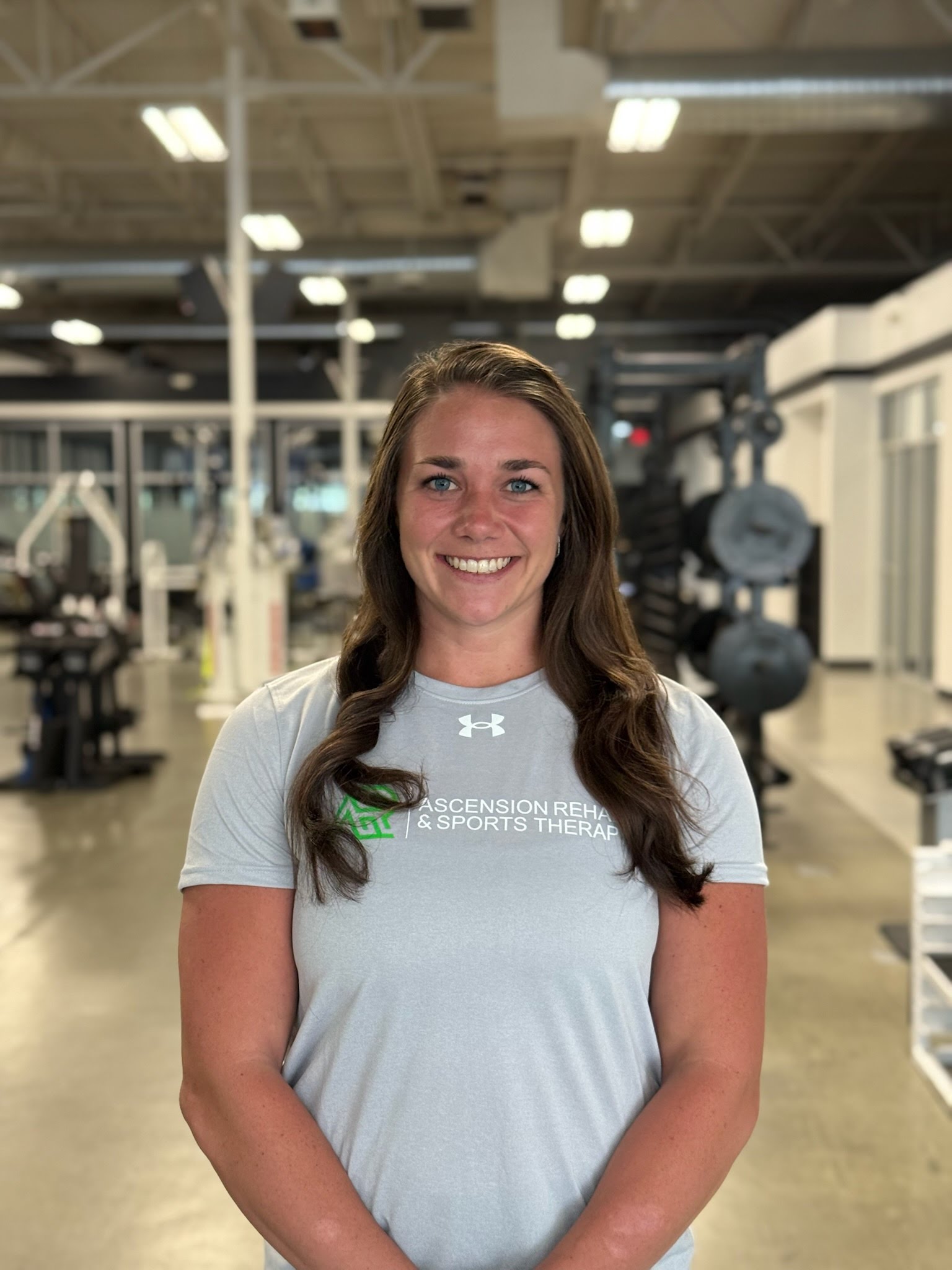The Real Reason Gymnasts and Cheerleaders Get Wrist Pain (and How to Fix It for Good)
- Dr. Erin Weisel

- Oct 16
- 3 min read
Wrist pain is one of the most common complaints we see among gymnasts and cheerleaders here at Ascension Rehab and Sports Therapy in South Charlotte. Between tumbling passes, vaulting, handstands, and stunting, the wrists are constantly exposed to high-impact forces and repetitive loading.
Research shows that up to 79% of gymnasts experience wrist pain at some point in their careers. Among cheerleaders, over 1 in 5 will deal with a wrist injury — and nearly 20% of those cases can be career-ending if not properly managed. The good news? Most wrist injuries are highly preventable and very treatable when the right strategy is in place.
Start by Looking Up the Chain
The wrist is often the victim, not the culprit. When we assess an athlete with wrist pain, our first step is to “look up the chain” — specifically at the shoulders, elbows, and thoracic spine.
For example, a gymnast or cheerleader with limited shoulder mobility might not be able to reach full overhead extension during tumbling or handstands. That restriction forces compensation through the elbows and wrists, increasing the load on smaller joints that weren’t designed to take that much stress.
In a back handspring, if the arms can’t fully reach past the ears, the elbows tend to collapse — forcing the wrists into excessive hyperextension. Over time, this leads to irritation of the growth plate (especially in younger gymnasts), tendon overuse, and even bone stress injuries.


Mobility Requires Stability
Many of the athletes we work with are naturally hypermobility-prone — meaning their joints move easily, but sometimes too easily. That flexibility is great for performance, but it comes at a cost: the need for exceptional strength and control.
Strong, stable shoulders act as the foundation for safe tumbling and stunting. When muscles like the rotator cuff, traps, rhomboids, and lats don’t provide enough stability, that stress shifts downward toward the elbow and wrist.
In these cases, the solution isn’t just stretching or taping the wrist — it’s rebuilding control and endurance in the upper body. That’s why we place such a strong emphasis on smart strength programming for our cheer and gymnastics athletes at Ascension Rehab.
Managing Wrist Pain Without Stopping Training
Stopping all activity is rarely the only option. In fact, one of our main goals is to keep athletes training safely while healing. Some common modifications we use include:
Focusing on hands-free skills or floor drills that reduce wrist load
Strengthening the upper body and scapular stabilizers to improve load tolerance
Using wrist taping or braces (like Tiger Paws) temporarily to reduce motion and protect irritated structures
These changes allow athletes to stay engaged and continue progressing while pain and inflammation calm down.
Long-Term Wrist Health: Fixing the Root Cause
Once symptoms start to improve, it’s crucial to address the underlying reasons the pain developed in the first place. This often includes:
Improving shoulder and wrist mobility to allow proper alignment in weight-bearing skills
Building upper body and core strength to share the workload more efficiently
Refining technique and body positioning to reduce impact through the wrists
By correcting these factors early, we not only resolve wrist pain but also prevent future flare-ups — helping gymnasts and cheerleaders enjoy longer, healthier, and more successful careers.
Helping Charlotte’s Gymnastics and Cheer Communities Stay Healthy
Pain sucks. Fear sets in and it causes you to doubt what you’re capable of. That doubt can make you question who you are.
Most traditional physical therapy takes a cookie-cutter, band-aid approach — a few generic exercises, some ice or stim, and a “see you next week.” It might help for a while, but it doesn’t teach you how to move with confidence or trust your body again.
At Ascension Rehab, we do things differently.We empower people by showing them just how resilient their bodies really are.
You don’t need to fear movement — you need to understand it.We guide you through the process, rebuild your confidence, and show you that your body isn’t fragile — it’s adaptable, strong, and built to handle more than you think.
At Ascension Rehab and Sports Therapy, our mission is to help young athletes in South Charlotte, Ballantyne, and the greater Mecklenburg area stay strong, mobile, and confident in their training. Whether you’re a gymnast, cheerleader, or parent of an athlete experiencing wrist pain, early intervention makes all the difference. Our Doctors of Physical Therapy specialize in treating sport-specific injuries and creating individualized performance programs to keep athletes doing what they love — without being sidelined by pain.
-Erin Weisel, PT, DPT




Comments